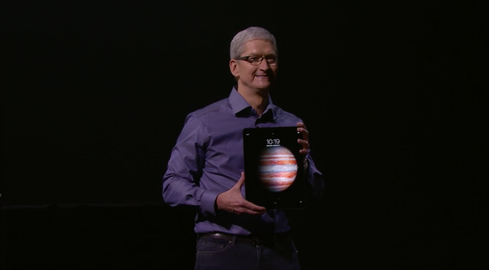Apple iMac Refresh: Powerful Processors, Prettier Graphics
Apple announced an update to its iMacs to include Retina display and sixth and fifth-generation Intel Core processors.

iPhone 6S, iPad Pro, TV, Watch: Apple's Fall Lineup
iPhone 6S, iPad Pro, TV, Watch: Apple's Fall Lineup (Click image for larger view and slideshow.)
Apple refreshed its iMac line of desktop computers on Tuesday with the promise of better graphics and more powerful processors.
The refresh added the Retina 4K display to the 21.5-inch iMac for the first time, as well as the Retina 5K display to every version of the 27-inch iMac.
"These are the most stunning iMacs we've ever made. With our gorgeous new Retina displays, more powerful processors and graphics and all-new Magic accessories, the new iMac continues to redefine the ultimate desktop experience," Philip Schiller, Apple's senior vice president of worldwide marketing, said in a Oct. 13 statement announcing the news.
Apple claims that the Retina 5K display is the world's highest-resolution all-in-one display, with 14.7 million pixels. That's seven times more pixels than an HD display.
With standard sRGB-based displays, some colors are not displayed accurately on a screen. The Retina 5K and 4K displays feature a wider P3-based color gamut (used in digital movie theaters) that provides a 25% larger color space.
The 27-inch iMacs use a sixth-generation ("Skylake") Intel Core processor and the latest AMD high-performance graphics that can deliver up to 3.7 teraflops of computing power. The new 21.5-inch iMac with Retina 4K display features a fifth-generation Intel Core processor ("Broadwell") and integrated Intel Iris Pro Graphics.
Two Thunderbolt 2 ports now come standard on all iMacs. They can support up to 20Gbps data transfer speeds for external drives and peripherals. The included three-stream 802.11ac WiFi allows the iMac to support up to 1.3Gbps wireless networking.
Apple's Fusion Drive, which is a hard disk and flash memory combination, has been reduced in price to a $100 option for the 21-inch iMac. (A 1TB hard drive comes standard.) Fusion Drive uses the Mac OS X software to analyze what files and apps are used most. It then transfers them to flash storage from the hard drive.
The new lower-priced configuration pairs a 1TB hard drive with 24GB of flash storage. It is also available with 2TB and 3TB configurations with 128GB of flash. Optional all-flash storage is available up to 1TB, which is now up to 2.5 times faster, Apple claims.
'Magic' Peripherals
The Magic Keyboard, Magic Mouse 2, and Magic Trackpad 2 were also announced Tuesday. Designed around a built-in rechargeable lithium-ion battery, all three accessories eliminate the need for disposable batteries. The keyboard and mouse are included with the iMac, and the upgrade to the trackpad is a $50 option.
The new Magic devices pair with the iMac when they are plugged in via the Lightning-to-USB charging cable. Apple says they can last about a month or more on a full charge.
Inquiries to Apple about exact communication methods used by the new peripherals were not returned by the time this blog was posted.
[Find out how Apple dumped ad-blocking apps over privacy fears.]
The Magic Keyboard features a full-size keyboard in a design taking up 13% less space on the desktop. With a new scissor mechanism and a lower profile, Apple says the Magic Keyboard provides a better typing experience.
The new Magic Trackpad 2 features a 29% larger surface and brings Force Touch to the desktop for the first time. Force Touch gives differing levels of touch in the trackpad interface -- ranging from a quick tap to a more forceful tap. It is also very useful in pressure-sensitive drawing.
Pricing
The 27-inch iMac comes in three models starting at $1,799, $1,999, and $2,999. The 21.5-inch iMac's three models start at $1,099 and $1,299, with a Retina 4K display starting at $1,499. All models are now available at the Apple stores and online.
About the Author(s)
You May Also Like
How to Amplify DevOps with DevSecOps
May 22, 2024Generative AI: Use Cases and Risks in 2024
May 29, 2024Smart Service Management
June 4, 2024







